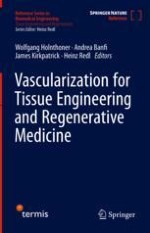2021 | Buch
Vascularization for Tissue Engineering and Regenerative Medicine
herausgegeben von: Wolfgang Holnthoner, Andrea Banfi, Prof. James Kirkpatrick, Prof. Heinz Redl
Verlag: Springer International Publishing
Buchreihe : Reference Series in Biomedical Engineering
